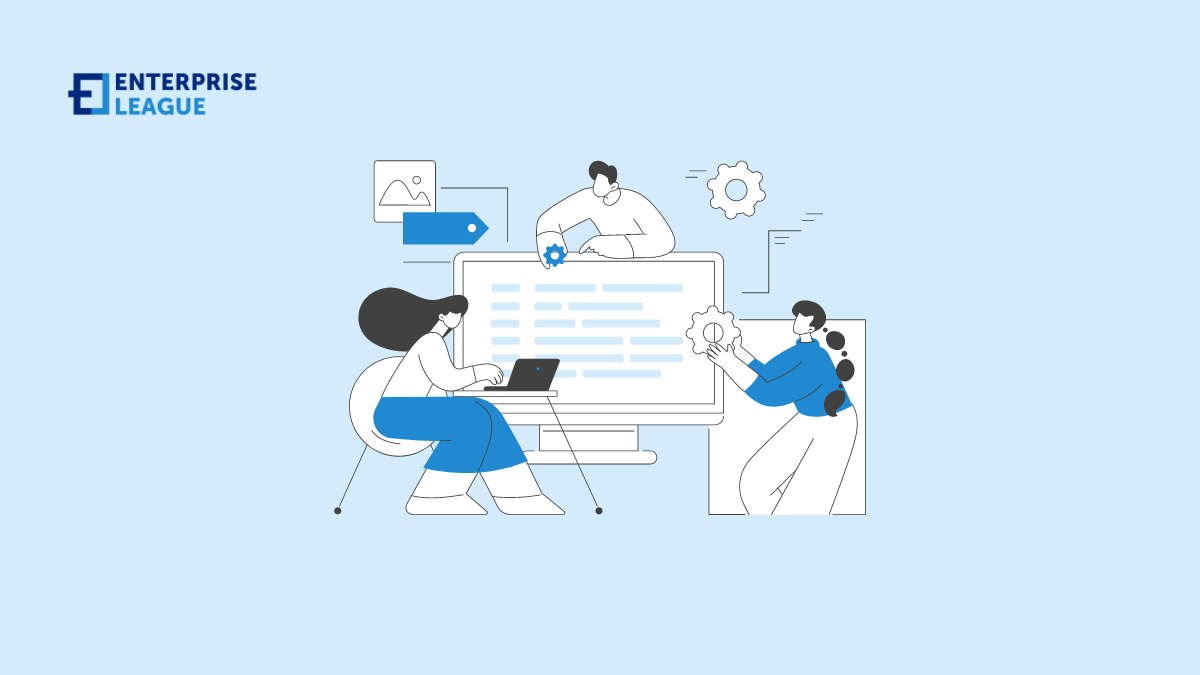Software development is a broad term connected with creating programs, applications, and mechanisms, driving all technical spheres of businesses. For instance, when addressing a software development company Litslink in 2024, we may talk of IT specialists, app developers, and even cybersecurity experts. So, how is “software development” defined, and what branches and expertise are implied? Stay tuned to understand the basics of this sphere and discover its newest trends.
What is software development in 2024
Starting from the basics, software development in 2024 remains the process of building software applications. Despite that, the scope of jobs and the number of software types have evolved significantly. It’s no longer about just writing a code. The sphere covers way more branches:
- Researching and understanding users’ needs in terms of UX design;
- Combining visuals with usefulness with the help of UI;
- Using cutting-edge tools to provide ease of use even for the most difficult technologies (for instance, crypto markets, stocks, design, or 3D modeling apps);
- Developing the newest safety measures to provide security from cyber-attacks and data leaks.
Modern software development is a collaborative job. It involves designers, project managers, IT specialists, and other experts, and it creates applications from the concept to final edits and visuals. That’s what separates modern development from earlier years.
Software development branches
The market is developing rapidly, attracting more specialists. In the USA alone, the number of software developers reached 4.3 million in 2023, with the number worldwide at 22 million. The same goes for investments: the overall software development market is expected to rise to $1,039 million by 2027.
The customer can now receive assistance and services from all possible IT spheres by addressing software development companies.
Cloud development
Cloud computing continues to rise, and loud development has become a popular approach for building flexible corporate applications. Those tools allow companies to store and access all their data using remote servers and hardware. As a result, businesses economize on expensive hardware and use the space with maximum efficiency. What’s happening in this sphere in 2024? Now, the focus lies on providing more powerful solutions. Since remote usage causes slight delays, developers are working on better connections and faster servers. Implementation of 5G Internet and new network methods are a priority.
No-code development
No-code development is a bright example of how significantly the sphere has changed. This game-changer makes application creation much faster and more accessible to more users. Special platforms offer easy interfaces with pre-made solutions and codes, where users can build their apps like with a construction toy. This also allows businesses without coding experience to create basic applications like lead forms, shops, landings, etc. While not suitable for complex projects, no-code platforms allow people without experience to craft their own programs.
AI development
Not including the AI trend would be unfair to any digital sphere — and software development is no exception. Machine learning is used for various tasks:
- code generations;
- automated testing;
- finding mistakes and bugs in a program;
- completing repetitive tasks;
- smart search.
This frees developers from routine tasks and allows them to focus on the UX and UI aspects of the project. Moreover, AI solutions can be implemented in the final product. Smart assistants and virtual support are used on websites, online platforms, and applications.
Security development
The cybersecurity sphere keeps its position as one of the leading branches. More measures of protection always mean more ways to hack the program unfortunately, those two spheres develop simultaneously and compete with each other. Currently, the primary focus is preventing data leaks, hacks, and malware detection. Despite AI opportunities, penetration testing remains the primary method for security testing and fixing. The idea of blockchain also helps to prevent unnecessary steps in data transfer. Blockchain remains the fastest and the most secure way to share information and provide online transactions.
Something stays the same
Currently, the solution lies in implementing more of a human factor and creativity into software development. While artificial intelligence and pre-maid platforms offer standard solutions, the sphere is developing thanks to creative specialists with a comprehensive view.
Conclusion
While some core elements like popular programming languages remain constant, the software development field as a whole continues to adapt. Software development has evolved into a collaborative effort, involving designers, project managers, IT specialists, and other experts, all working together to bring innovative and impactful applications to life. By maintaining a focus on user needs, security, and a commitment to innovation, software development companies and professionals can position themselves as leaders in this rapidly changing industry.
More must-read stories from Enterprise League:
- B2B payment solutions that can help you transform your business.
- The best apps for entrepreneurs that will help you achieve your goals.
- Pros and cons of social media for business you should be aware of.
- How to handle a situation where employees are not getting along.
- Have a look at the best countries to start a business as a foreigner.
Related Articles
14 unique business ideas with drones that guarantee a profit (2024)
If you are one of those that loves tech gadgets, we’ve made a list of 14 business ideas with drones that will inspire you to start a business in this field.
How mortgage workflow automation enhances loan officer efficiency
Embracing automation and its transformative impact allows loan officers to prioritize developing connections with borrowers and enhancing customer satisfaction.
26 best electrical equipment companies in 2024
Electrical equipment companies, in general, are companies working with products that produce, distribute, or use electrical energy.
14 unique business ideas with drones that guarantee a profit (2024)
If you are one of those that loves tech gadgets, we’ve made a list of 14 business ideas with drones that will inspire you to start a business in this field.
How mortgage workflow automation enhances loan officer efficiency
Embracing automation and its transformative impact allows loan officers to prioritize developing connections with borrowers and enhancing customer satisfaction.






